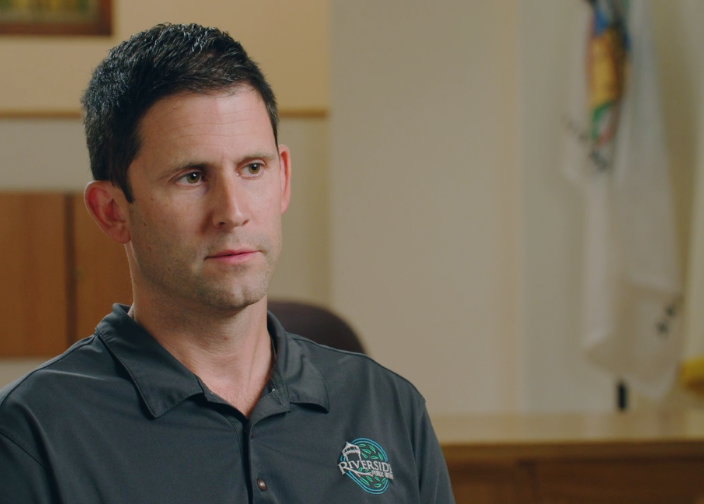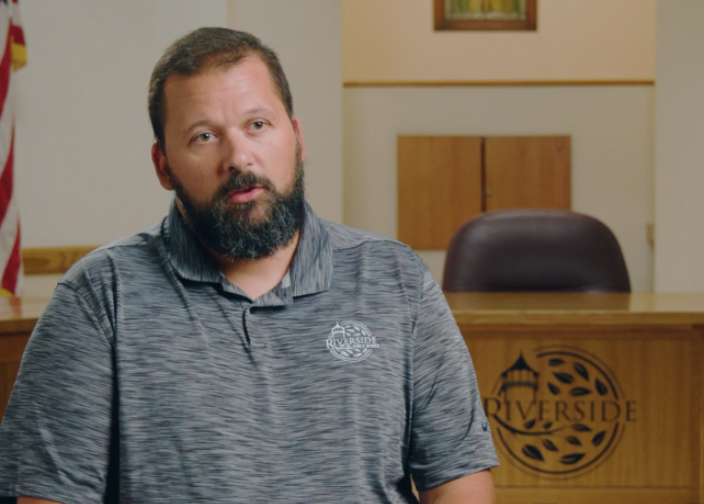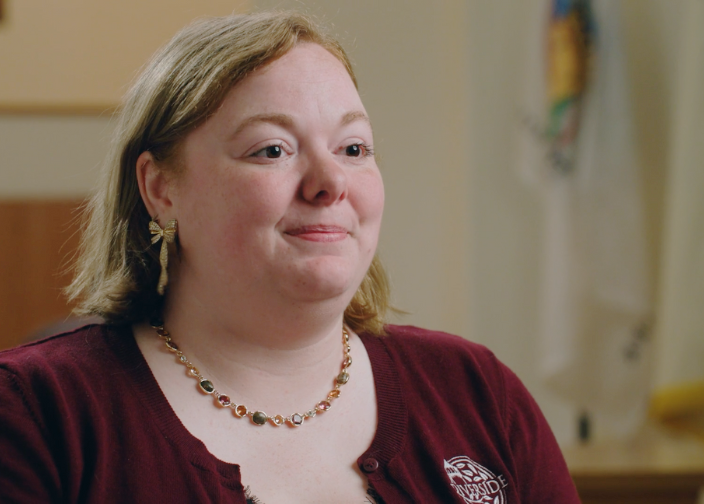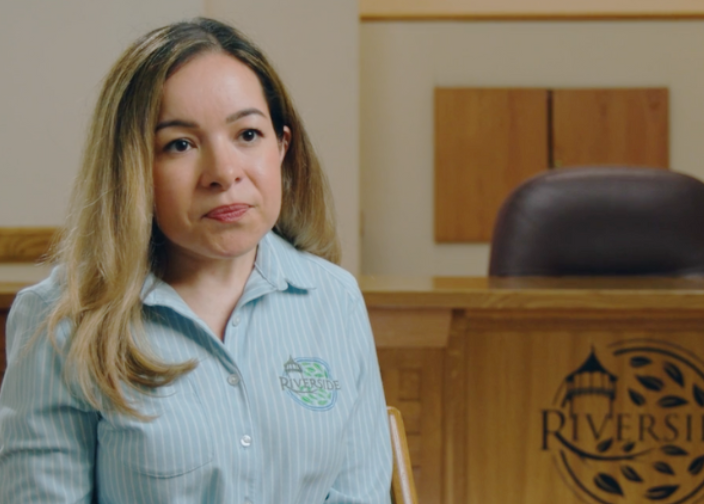
Embracing Change as the Path to Preservation
A Village Rooted in History
A village rooted in history
Nine miles west of downtown Chicago, The Village of Riverside, Illinois, is celebrated as one of America’s first planned communities—a living museum of landscape design and historic architecture along the Des Plaines River. Designated a National Historic Landmark in 1970, Riverside takes pride in preserving its natural and architectural heritage while providing modern public services to its 9,300 residents. Nicknamed the “Village in the Forest,” Riverside is known for its lush and diverse tree canopy, for which it has earned accreditation as a Level II Arboretum.
For Public Works Director Dan Tabb, stewardship runs deep. “We’re responsible for maintaining a system that’s as old as The Village itself,” said Tabb. “Our job is to protect the resource, comply with state regulations, and deliver the quality of service our residents expect.”


Aging meters, rising water loss
Riverside purchases treated Lake Michigan water through a neighboring municipality, which means every gallon is carefully tracked. As part of the state’s Lake Michigan Allocation Program, utilities must submit detailed LMO-2 water audits to the Illinois DNR showing how much water enters the system versus how much is billed. By 2017, Riverside’s audit revealed non-revenue water around 20 percent, which exceeds the DNR’s preferred 10 percent threshold.
Old mechanical meters –installed between 2002 and 2004 -- were partly to blame. They had begun to lose accuracy—particularly at low flows, such as dripping faucets, humidifiers, and leaking toilets. As Tabb explained, “When those old gears wear down, they start to under-register, and that’s lost revenue for the utility.”
The Board of Trustees had long maintained a policy to replace meters roughly every 20 years, and by 2020 that milestone was approaching. The Village could have stayed with its long-time vendor, but Tabb and his team saw an opportunity to think bigger. “Change takes effort, time, and money,” he said, “but it’s worth it when you know there’s a better solution.”
Choosing a better meter
The first spark came at WATERCON 2019, when Tabb saw a live flow-test demonstration comparing multiple manufacturers. “Kamstrup’s low-flow capture stood out immediately,” he recalled. “I asked to take one home and run my own bench test.” The in-house test confirmed what the demo had shown: Kamstrup’s ultrasonic flowIQ® 2200 meters were the most accurate at detecting even the smallest flows. That precision—combined with the promise of acoustic leak detection (ALD) built into every meter—convinced the team to dig deeper. Riverside compared proposals from Sensus, Neptune, Mueller, and Kamstrup, evaluating not only unit cost but total life-cycle expense, software, and support. Though Kamstrup’s meters carried a higher upfront price, the math told a different story.

Implementing the solution
To stretch project dollars, Riverside chose to perform all installations in-house, saving more than $300,000 in contractor costs. The compact, all-in-one design of the flowIQ® 2200 made this possible. Because the radio communications are embedded (or built directly in the meter), there was no need for external wires or wall-mounted transmitters.
“With the antenna built in, we cut our install crew in half,” Tabb explained. “One technician could do what used to take two.”
This simplicity also eased installations in historic homes where space is tight and aesthetics matter. For Superintendent of Public Works Dan Williams, that design choice was a game-changer.


One collector, complete coverage
Riverside’s dense tree canopy and winding streets presented a significant test for radio propagation. Kamstrup’s propagation study predicted that the entire two-square-mile area could be covered by a single network collector.
The study proved accurate. One collector mounted on a new 100-foot pole at the Public Works yard provided full coverage, despite the dense foliage that defines the “Village in the Forest.”
“I’m still amazed,” Williams said. “We can be in a deep basement, program a meter, and instantly connect to that one collector through all those trees.”

Delivering measurable results
Within the first year of installation, Riverside’s non-revenue water dropped by 5 percent, bringing the utility closer to the DNR’s compliance target.
“We were at nearly 20 percent,” Tabb said. “Right after the install, we saw that number fall by about five points. That’s real progress.”
The improvement allowed The Village to document measurable gains in its annual audits—critical for maintaining its Lake Michigan allocation. “No regulatory body likes to see you getting worse,” Tabb noted. “Now, when we report to IDNR, we can show concrete improvement backed by data.”
Proactive leak detection
While Riverside is focused on an ongoing, resource intensive, lead-service line replacement program, they are taking a restrained and systematic approach to using their new ALD capabilities. However, that hasn’t prevented them from recognizing the value of this technology.
“With the old meter system, we would do a leak survey... once a year,” said Dan Tabb. “That gentleman would leave with a leak report and say, this looks good. A leak forms tomorrow. You don't see it till next year when he does the same leak survey.” In contrast, adds Tabb, “with ALD being in place, you perform a leak survey right now with the click of a mouse button.”
Customer service transformation
The AMI system transmits data multiple times daily, replacing bi-monthly manual reads. High-bill complaints—once routine—have been cut by more than 50 percent. The upcoming customer web portal will make the process even more interactive, allowing residents to track usage and receive alerts themselves.

This real-time insight has also improved inter-department communication. With Kamstrup’s READy Manager software, data once siloed in Public Works is now shared across Finance and Administration. “We all see the same information,” Finance Director Yvette Zvala explained. “If a resident calls about a leak or billing question, any of us can answer confidently.”

Financial responsibility and future-ready operations
The total project cost of $1.05 million includes meters, AMI network, and software. The life-cycle savings—from reduced maintenance, fewer service calls, and more accurate billing—will more than offset the initial premium. For Dan Tabb, the benefit is simple and clearcut, “The flowIQ® 2200 has a 20-year accuracy warranty. We don’t have to second-guess our data anymore.”

A village that values partnership
The Riverside project marked Kamstrup’s first collaboration with EJP in the Midwest—and its first major AMI deployment in a region dominated by competitor technologies. Choosing Kamstrup was, in Tabb’s words, “going against the grain.”
For Kamstrup, Riverside validates that its ultrasonic technology performs equally well in cold-weather, indoor-meter environments—a key differentiator for northern utilities.

Beyond the numbers: A human impact
Riverside’s staff has received heartfelt thanks from residents whose homes were spared costly damage or whose leaks were caught early. Williams recalled one such call: “We phoned a snowbird resident to tell him his water heater was leaking. He sent a neighbor over and avoided months of wasted water and damage. Later he called back just to thank us.”
The system has also deepened The Village’s relationship with its citizens. “Customer service has always been part of Riverside’s identity,” Stenzel said. “Now it’s data-driven. We’re not just reading meters—we’re protecting people’s homes.”
“It’s empowering,” Williams added. “The data helps us serve residents better, faster, and more personally than ever before.”
Looking ahead
With full installation complete and more than 300 leak and burst alerts already resolved, Riverside is poised to expand its use of the system. Next on the horizon is the public-facing portal that will give residents direct access to their usage data and alerts—a step that aligns perfectly with Riverside’s transparent, community-oriented approach.
Even as The Village prepares for the monumental task of replacing all lead service lines by 2044, its water department has gained tools to manage that challenge intelligently. “We know where our issues are,” Tabb said. “Kamstrup gives us visibility we never had before.”
“If you want a meter that gives you control, protects your residents, and proves its value every day,” Tabb said, “Kamstrup is that meter.”


